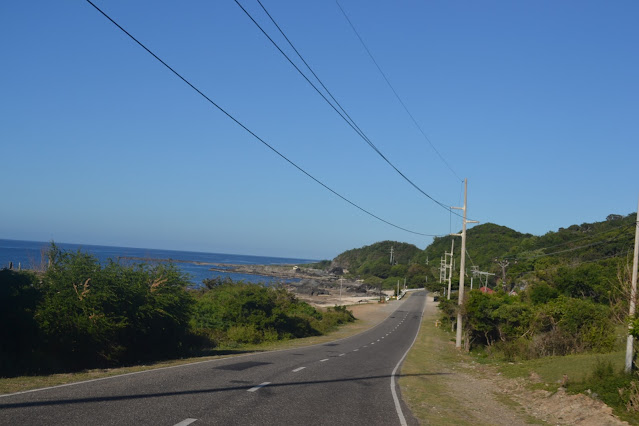Ilocos Norte Capitol Building
There is something good I feel whenever I am in Laoag City. I feel like I am in a city but there is still an aura of a province. The city plaza, the capitol building, the cathedral and the main thoroughfares are connected.
An ideal Spanish-town design
In our history class, it has been said that the Spaniards would normally construct the important structures at the center of the town with government building, school, plaza and church in adjoining locations and the private houses are just located around these structures.
The sprawling town plaza
Early in the morning, the senior citizens and the joggers can be seen occupying the open plaza either to get the heat of the sun, have a healthy walk, do exercises routine, or jog around.
Capturing the Capitol Building at a distance
The open town plaza in most cases is being used as a venue for senior citizens having discussion or endless chat where you can hear that they are sharing with each other their experiences and the most I hear is about politics and world wars of their times.
The Sinking Bell Tower of Laoag
This structure is believed to be constructed after 1707 earthquake which has a foundation of 90 meters (300 feet) which sinks into the ground at a rate of an inch a year. It is reinforced with four massive columns on each corner and a winding stairway leading to the belfry. It used to have a large clock on the tower's western face. Unfortunately, it is already closed to tourists. This is just a few blocks away from the capitol building.
Saint William's Cathedral of Laoag City
This cathedral is just a walking distance from both the capitol building and the sinking bell tower. This was built in 1612 by the Augustinian friars and serves as the seat or central church of the Roman Catholic Diocese of Laoag.
Below is the original blog post of my first visit

Laoag City is a first class city in Ilocos Norte, the northernmost city of the Philippines. The municipalities of San Nicolas, Paoay, Sarrat, Vintar, and Bacarra form its boundaries. The foothills of the Cordillera Central mountain range to the east, and the South China Sea to the west are its physical boundaries.



What makes Laoag City accessible to tourists is its international airport which aside from having daily flights from Manila, there are also direct flights to/from Hongkong and Mainland China. Bus travel from Manila to Laoag is approximately 12 hours.

The first time I visited Laoag was in December 2001 as part of my Ilocos Sur-Ilocos Norte Trip and after that I repeated this trip package for thrice including this recent one. I had good memories of these trips and I find Laoag such a good place to stay for a vacation as it serves as the springboard to visit other tourist attractions of the province of Ilocos Norte. In fact, I stayed overnight in Laoag the day before my flight to Batanes trip.

Group tours will find it easy to rent for a service vehicle to hop from one destination to another in Ilocos Norte for a minimum of two days covering all its major tourist destinations, namely: Fort Ilocandia Resort Hotel and Casino, Laoag’s Sinking Bell Tower and Saint Williams Cathedral, Paoay Church, Paoay Lake and the Malacanang of the North, Paoay Sand Dunes, Marcos Mansion and Maoseleum in Batac City, Marcos Museum in Sarrat, Cape Bojeador Lighthouse, Kapurpurawan Rock Formation, Bangui Wind Mills, Paraiso ni Anton, Patapat Viaduct in Pagudpud, Saud Beach of Pagudpud. One needs to have a good haggling skill to get a chartered vehicle for a day or two. For backpack travelers, a jeepney would be cheaper where you can find them in queue in bus terminals.

The 18 hotels of Laoag city as you can see in this link can be a useful guide for the reservation of accommodation of visiting tourists. This link can be of great help to tourists who wish to stay in the city. Of course, the best of them all is the 5-star Hotel of the Fort Ilocandia Resort and Casino located in Barangay Calayab which is outside the city proper. Within the vicinity of Fort Ilocandia is a picturesque “lagoon”. A beach is also near outside Fort Ilocandia with cheaper accommodation facilities and restaurants where backpackers will find it a better alternative.

Another hotel in Laoag which impressed me was the Java Hotel located at Bacarra Road, Brgy. 55-B Salet Fariñas Caltex Station, Laoag City but as backpack travelers, we opted to stay at Texicano Hotel located at the corners of Giron and Rizal Streets of the city.
The city itself showcases a taste of rich history which can be seen through its Sinking Bell Tower. The structure of this bell tower is claimed to be the most solid and tallest bell tower in the Philippines. It has a massive 45-meter (150 foot) bell tower which was built by the Augustinians in 1612. Located almost a hundred meters away from the St. William's Cathedral, the tower has sunk to the ground and leans slightly to the north.
Laoag Cathedral, canonically known as St. William's Cathedral was built in 1612 by Augustinian friars to replace a wooden chapel. It is known for its Italian Renaissance design and its Sinking Bell Tower, which sinks into the ground at a rate of an inch a year.













































